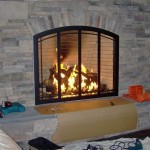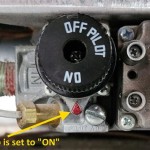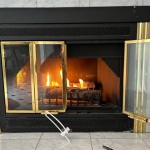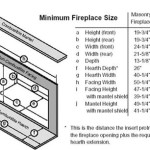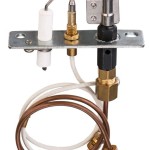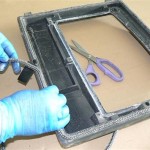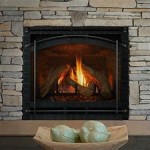Victorian Style Gas Fireplace Inserts: A Blend of Elegance and Modern Convenience
Victorian style gas fireplace inserts offer a harmonious combination of historical aesthetics and contemporary functionality. These inserts allow homeowners to enjoy the ambiance and warmth of a traditional fireplace without the mess and inconvenience often associated with wood-burning alternatives. This article will explore the defining characteristics, benefits, and considerations when selecting a Victorian style gas fireplace insert for your home.
Defining Characteristics of Victorian Style Gas Fireplace Inserts
Victorian design is characterized by ornate detailing, rich materials, and a sense of grandeur. These elements are carefully replicated in Victorian style gas fireplace inserts to capture the essence of the era. Key features often include:
Elaborate Cast Iron Surrounds: Inserts frequently feature intricately designed cast iron surrounds adorned with floral motifs, geometric patterns, and classical figures. The cast iron provides durability and contributes to the overall historical authenticity.
Arched or Rectangular Facades: Common facade shapes include arches and rectangles, often accented with decorative keystone elements or fluted pilasters. These architectural details contribute to the formal and elegant aesthetic of the Victorian period.
Simulated Coal or Log Fuel Beds: To mimic the traditional fireplace experience, these inserts utilize simulated coal or log fuel beds. These artificial fuel sources are often crafted with realistic detailing and ember effects to create a convincing illusion of a burning fire. The flickering flames dance around the simulated fuel, providing a visual focal point.
Brass or Antique Finishes: Many Victorian style gas fireplace inserts are finished with brass, antique bronze, or other metallic accents. These finishes add a touch of luxury and further enhance the historical appeal.
Ornate Grates and Fenders: Optional additions such as ornate grates and fenders can further embellish the fireplace, adding to its period-specific charm. These accessories often feature intricate designs and contribute to the overall authenticity of the fireplace.
Advantages of Gas Fireplace Inserts over Traditional Wood-Burning Fireplaces
While a traditional wood-burning fireplace evokes a certain nostalgia, gas fireplace inserts offer significant practical advantages. These benefits make them an attractive option for homeowners seeking both aesthetic appeal and ease of use.
Convenience and Ease of Use: Gas fireplace inserts require minimal effort to operate. With the flick of a switch or the press of a button on a remote control, the fireplace ignites instantly. There is no need to gather, chop, or store firewood. The convenience factor greatly enhances the user experience.
Consistent and Controllable Heat: Gas fireplaces provide consistent and controllable heat output. Thermostatic controls allow homeowners to precisely regulate the temperature of the room, ensuring optimal comfort. This level of control is difficult to achieve with a traditional wood-burning fireplace.
Improved Safety: Gas fireplace inserts are generally safer than wood-burning fireplaces. They eliminate the risk of stray sparks and embers that can cause fires. Furthermore, many models are equipped with safety features such as oxygen depletion sensors (ODS) that automatically shut off the gas supply if carbon monoxide levels become too high.
Reduced Emissions: Gas fireplaces produce significantly fewer emissions than wood-burning fireplaces. This makes them a more environmentally friendly choice. They contribute less to air pollution and greenhouse gas emissions.
Lower Maintenance: Gas fireplace inserts require less maintenance than wood-burning fireplaces. There is no need to clean out ashes or sweep the chimney regularly. Annual inspections by a qualified technician are typically sufficient to ensure safe and efficient operation.
Considerations When Selecting a Victorian Style Gas Fireplace Insert
Choosing the right Victorian style gas fireplace insert requires careful consideration of various factors, including size, venting requirements, and safety features.
Size and Heat Output: The size of the fireplace insert should be appropriate for the size of the room it is intended to heat. A fireplace that is too small may not provide sufficient warmth, while one that is too large may overheat the space. Consider the BTU (British Thermal Unit) rating of the insert to determine its heating capacity.
Venting Requirements: Gas fireplace inserts require proper venting to safely exhaust combustion gases. There are two main types of venting systems: direct vent and B-vent. Direct vent systems draw air from outside the home for combustion and vent exhaust gases directly outside through a sealed pipe. B-vent systems use existing chimneys to vent exhaust gases. The type of venting system required will depend on the design of the fireplace and the construction of the home.
Safety Features: Ensure that the gas fireplace insert is equipped with essential safety features, such as an oxygen depletion sensor (ODS) and a safety shut-off valve. The ODS monitors oxygen levels in the room and shuts off the gas supply if levels become too low. The safety shut-off valve automatically shuts off the gas supply if the pilot light goes out.
Installation: Proper installation is crucial for the safe and efficient operation of a gas fireplace insert. It is highly recommended to hire a qualified and licensed installer to ensure that the insert is installed correctly and in accordance with local building codes. A professional installer can also advise on the best venting system for your home and ensure that all safety features are properly functioning.
Aesthetic Compatibility: While the primary goal is achieving a Victorian aesthetic, consider how the insert's design will integrate with the existing décor of the room. Choose an insert that complements the color scheme, architectural details, and overall style of the space. Take measurements of the existing fireplace opening to ensure that the insert will fit properly and look proportionate.

Belmont Small Gas Insert

Windsor Small Victorian Style Gas Insert

Belmont Small Gas Insert

Gas Fires For Victorian Fireplaces Fireplace Wood Burning Inserts Design

Windsor Small Victorian Style Gas Insert

Period And Victorian Fireplace Inserts Bonfire Fireplaces

Lytton Cast Iron Fireplace Insert 37 Victorian

Stovax Victorian 16 Tiled Fronts Solid Fuel Bonfire

Windsor Gas Fireplace Victorian Insert

Decorative Arched Insert Fireplaces Stovax Traditional

